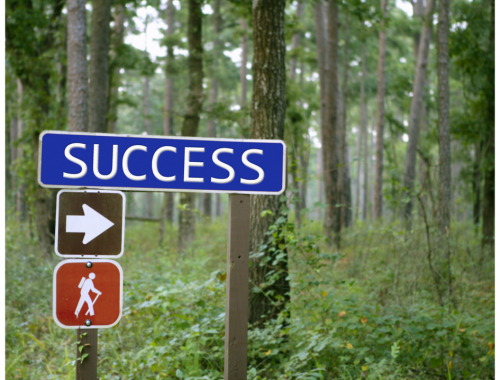Someone recently asked me is I could teach a small group of college-bound high school seniors how to set up their LinkedIn profiles. Funny, because we’d just come out of our monthly Lean In Circle meeting where we went through our profiles one by one and updated them. There are a ton of people blogging in detail about tips and it’s definitely a project to think about that first little intro blurb, but I’m just going to give you a quick checklist of things to do for that new empty little profile and link them to other posts that give you some tips on how to do those things.
- Make the profile using an adult name email account you will have forever
(NOT the new @school.edu, however proud you are) - A good business photo (creative type? marketing? Add a background photo, too.)
- Write a snappy little profile headline
(what’s your unique selling proposition? “Student at XYZ University” is a no-go, “Aspiring whatever” is a maybe, and it’s okay to have fun, if that’s who really who you are:“Philosophy major aspiring to be employed someday”) - Customize your public profile URL (lose the random digits and do something you can remember, in my case I use www.linkedin.com/in/susanelyon because the susanelyon matches up with my other accounts, like Twitter.
- Have a summary that would make someone want to interview you. Show a little personality (a mature personality), and feel free to say something about your personal passions. Right now you don’t have a ton of leadership or even work skills to weave in, but this is a perfect place to say “A prize-winning high school debater excited to start a new four-year life in the Midwest, and looking for a new set of friends and opportunities to work together to make the world a better place.” Who on that campus wouldn’t want you to be treasurer of their club? What college administrator wouldn’t take your meeting? (It’s a low bar to be a rock star among 18-year-olds.)
- Experience may be light but coming out of high school and through college, it’s fine to put student leadership here. You can use the volunteer section for community service, but treat club, ASB, fraternity/sorority jobs like real job experience. Explain what the VP of Risk Management did for Alpha Phi, what the student coordinator does for the Science Symposium. (Whenever possible, try and get a better title than “coordinator”—I know it can be a big job, but it’s generally the lowliest job in a company and you want to speak the language of potential interviewers, even for freshman year informational interviews. Ask if the title can be co-chair or student chair or membership chair. Titles are free and no one probably cares. Be sure to tip off your fellow students, so the titles still make sense in context.)
- Tackle this project with some friends on laptops together. Link to each other. Figure out what skills you can realistically say you have at a professional level and recommend each other for three. Making a Youtube videos of your pets would probably not make you an expert in video production on LinkedIn—even if you have a good camera and edit in Premiere. It might make you an expert in YouTube. Being captain of your lacrosse team, if it’s a position with real responsibilities, may make leadership a reasonable skill. (Did you lead the team in any way other than athletics? Anything off the field?) Consider with your friends whether your skill in this arena is good enough that you’d put it on your resume if applying for an internship.
- Send customized LinkedIn invites to relevant adults now. Anyone you worked for, a parent volunteer who led a group, coaches, etc. It’s easy to write a very short note and say you’re off to ABC college in the fall so you want to connect now on LinkedIn. Sending requests years later to a parent volunteer or the neighbor who gave you a summer job in his warehouse when you were 15, when you’ve had no contact in the interim means it’s too late unless you can renew the connection somehow.
CARE AND MAINTENANCE OF YOUR PROFILE
Be sure as you join things to keep adding to the profile. If you join a group, get everyone to make a profile, link to each other, promote each other’s skills. If you actually get to know a professor or administrator (they would recognize your name without you being present or they would know your name if they were shown just a photo), then link to them. If you meet a parent or alumni and have a meaningful interaction when they are visiting, send the request, with a custom short note, right away.
SOCIAL MEDIA AND THE PROFESSIONAL YOU
I am well aware that my Twitter @susanelyon is the professional me, not the personal me, so while I may tweet humorous things, they are business-oriented, never cute animal videos, click bait headlines, Hollywood gossip, and I try not to go too deep in politics. My business tweets are most likely to be links to interesting business news, profiles, and book reviews. If you have accounts that are not the professional you, I suggest thinking of yourself as two different people (two different brands). Start moving the ones in your name to that upcoming professional you and go a little undercover for the more personal you. Even if your career is in the arts and you’re sure anything goes, my experience is that things can change. You may want or need to have a side gig teaching or tutoring that pays the bills, so don’t terrify prospective employers. Even a tattoo artist specializing in art for professional athletes still has a business and has to also have a banker and an insurance agent. There’s just no way to guarantee you will avoid dealing with the straight world every step of the next 60 years.





No Comments